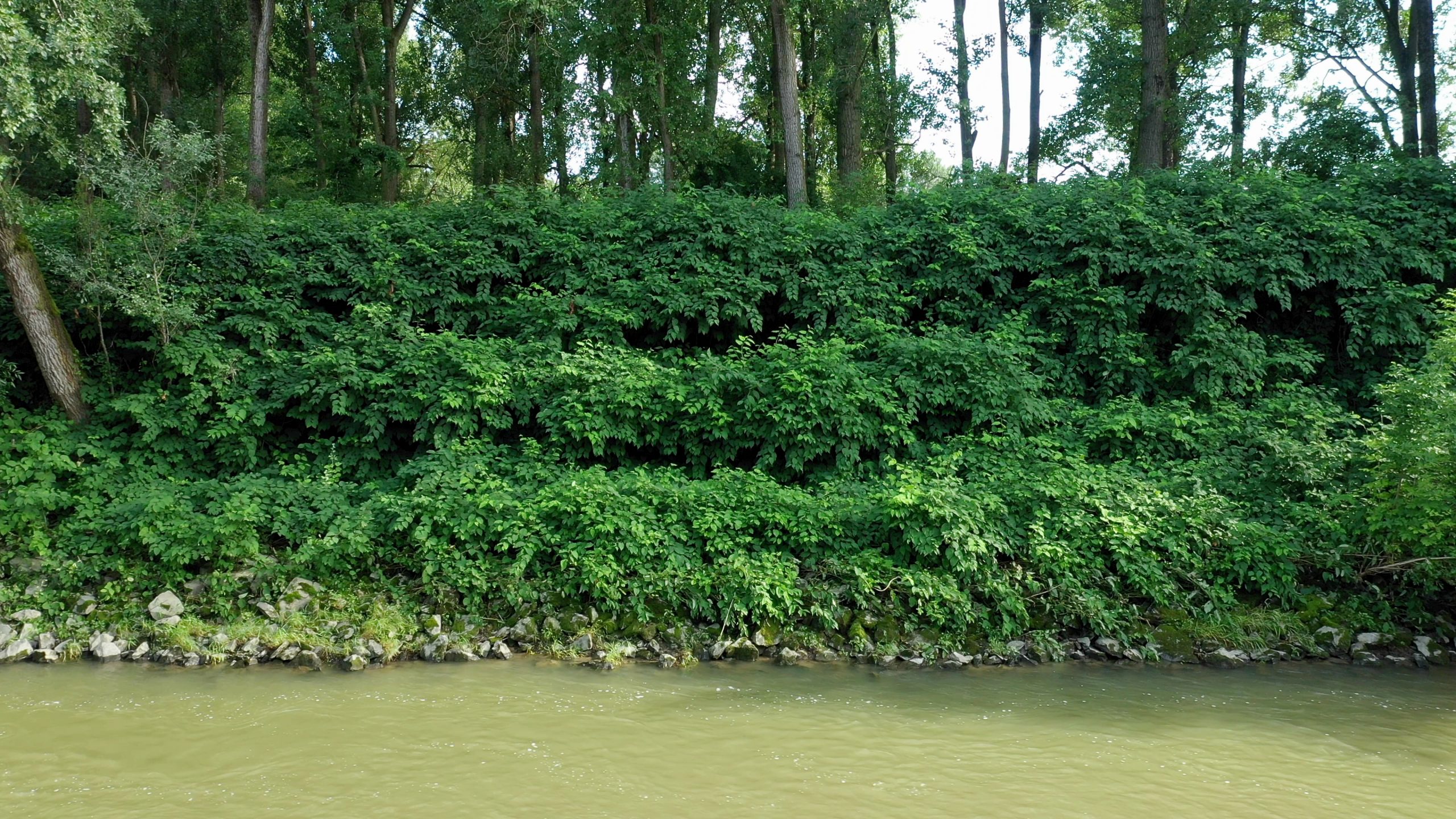How Nature’s Most Tenacious Plant Inspires Innovative Resilience and Sustainable Solutions.
Japanese knotweed is no stranger to headlines, property disputes, and the headaches it causes for homeowners across the UK. But what if this invasive plant isn’t simply a menace to be eradicated, but also a masterclass in survival, adaptation and even potential innovation? In this article, we flip the script on knotweed, exploring its history, its uncanny ability to thrive in adverse conditions, and how these qualities might inspire fresh, sustainable approaches to managing not only the plant itself, but broader environmental challenges.
A Quick Recap: The Rise (and Infamy) of Japanese Knotweed
Introduced to Europe in the 19th century as an ornamental curiosity, Japanese knotweed (Reynoutria japonica) soon revealed a relentless nature hidden beneath its seemingly unassuming exterior. Its capacity to spread rapidly – even from minuscule fragments – has earned it a reputation as one of the most invasive species in the UK. Property surveys, legal disputes, and hefty management costs are all part of its legacy. Yet, the very traits that make knotweed such a formidable adversary also offer a fascinating glimpse into nature’s capacity for resilience and adaptation.
The Resilience Factor: Lessons in Adaptation
Consider the most formidable challenges that demand flexible strategies, a willingness to reassess approaches, and the ability to uncover opportunities even in the toughest circumstances. Japanese knotweed embodies this resilient spirit. Below are some key attributes that highlight its impressive survival skills:
1. Rapid Growth and Regeneration
Knotweed’s ability to grow and regenerate is nothing short of astounding. Even when efforts are made to ‘defeat’ it – by cutting it back or otherwise – the plant manages to bounce back, often stronger than before. This regenerative quality reminds us that resilience is not just about withstanding setbacks, but also about emerging from them more robust than ever.
2. Adaptability to Diverse Environments
From riverbanks to urban landscapes, knotweed adapts to a variety of conditions. Its versatility is a crucial survival trait. This success across different environments encourages a broader reflection: what if similar adaptive strategies could be applied to sustainable practices in urban planning or construction? Imagine designs that flex with changing conditions, much like knotweed itself.
3. The ‘Fragmentation’ Phenomenon
Even tiny fragments of knotweed can give rise to new growth – a reminder that small efforts can sometimes lead to significant outcomes. This phenomenon serves as a metaphor for the idea that every small initiative can have a big impact, echoing the sentiment that in both nature and human endeavour, even the smallest actions can create ripples of change.
Rethinking Management: Sustainable Strategies for a Greener Future
Historically, the battle against Japanese knotweed has relied on chemicals, heavy machinery, and persistent manual effort. But what if there were a more innovative, sustainable way to manage this formidable plant? Recent advances in environmental science suggest some promising new angles:
Integrated Management Approaches
Modern strategies are shifting towards integrated management – combining mechanical, biological, and even cultural methods to control invasive species more sustainably. Consider the following avenues:
- Biological Control: Researchers are investigating natural predators and pathogens that could keep knotweed in check. By leveraging the plant’s natural ecosystem, it may be possible to reduce reliance on chemical herbicides.
- Phytoremediation and Biomass Utilisation: There is growing interest in repurposing knotweed’s abundant biomass. Some studies propose that the plant could be transformed into a resource for bioenergy production, building materials, or even natural fibres, thus turning an environmental challenge into an asset.
- Resilient Infrastructure: In areas prone to knotweed infestations, engineers are experimenting with construction techniques designed to withstand—or even incorporate—the presence of the plant. Designing foundations and barriers that accommodate nature’s persistence might help mitigate property damage.
Policy and Community Engagement
Effective knotweed management extends beyond technology and biology – it requires sound policy, community awareness, and proactive planning:
- Early Detection and Rapid Response: Just as early intervention can make all the difference in managing a challenge, identifying Japanese knotweed at an early stage can greatly reduce management costs and prevent property damage. Diligent monitoring and prompt response measures are essential for effective control.
- Collaborative Efforts: Tackling environmental challenges is seldom a solo mission. Encouraging collaboration among property owners, local councils, and environmental agencies can foster a united and innovative approach to managing knotweed.
What Knotweed Teaches Us About Adaptation and Resilience
Beyond its immediate challenges, Japanese knotweed offers a broader lesson in how living systems adapt. Here are a few takeaways:
Embracing Change
Knotweed thrives where other plants might wither. Its ability to adapt to soil disturbances, fluctuating moisture levels, and even chemical treatments is a powerful reminder of the benefits of embracing change rather than resisting it. In both nature and human endeavours, adaptation can turn obstacles into stepping stones.
Innovation Through Necessity
When traditional methods prove insufficient, knotweed’s persistence spurs innovation. This necessity has driven scientists and engineers to explore unconventional solutions – from biological controls to novel construction materials. It’s a striking example of how challenges can ignite creativity and spark progress.
Sustainability in the Face of Adversity
Sustainability isn’t just about being eco-friendly—it’s about creating systems that can withstand the test of time. Knotweed’s robust nature suggests that sometimes, the most effective solutions are those that work with nature rather than against it. Studying its strategies may well reveal new pathways to sustainable living that benefit both the environment and our communities.
Innovative Uses and Future Opportunities
Looking to the future, what if the persistent power of knotweed could be harnessed for good? Researchers are already exploring some tantalising possibilities:
Bioenergy and Bioproducts
- Renewable Energy Source: Given its rapid growth, knotweed produces substantial biomass. If managed sustainably, this biomass could be converted into bioenergy – a renewable alternative to fossil fuels.
- Natural Fibres: The plant’s tough, fibrous structure has sparked interest as a potential source of raw material for natural fibres, which could be used in construction, textiles, or insulation products.
Environmental Remediation
- Phytoremediation: Emerging research suggests that knotweed’s robust growth could be harnessed to extract toxins from contaminated soils—a process known as phytoremediation. Though challenging, managed properly, this approach could help clean polluted areas.
Architectural Integration
- Resilient Design: Forward-thinking architects and urban planners are exploring how the study of invasive species like knotweed could inform resilient building designs. By understanding how knotweed navigates obstacles and integrates with its environment, it may be possible to develop construction techniques that are both sustainable and adaptable to changing climates.
Conclusion: Embracing the Paradox
Japanese knotweed may have earned its reputation as a pest, but beneath its aggressive exterior lies a compelling narrative of survival, adaptation, and even opportunity. As the challenges of invasive species management continue to evolve, knotweed’s story serves as a reminder that every challenge opens the door to new strategies, innovative solutions, and a deeper understanding of the natural world.
By rethinking the approach to knotweed, there is a chance not only to mitigate its negative impacts but also to draw inspiration from its resilience. In doing so, the journey towards sustainable living becomes a testament to the power of adaptation—turning obstacles into opportunities and challenges into catalysts for creative progress.
With a spirit of curiosity and a commitment to sustainability, this fresh perspective on Japanese knotweed invites us all to see nature’s complexities in a new light.


